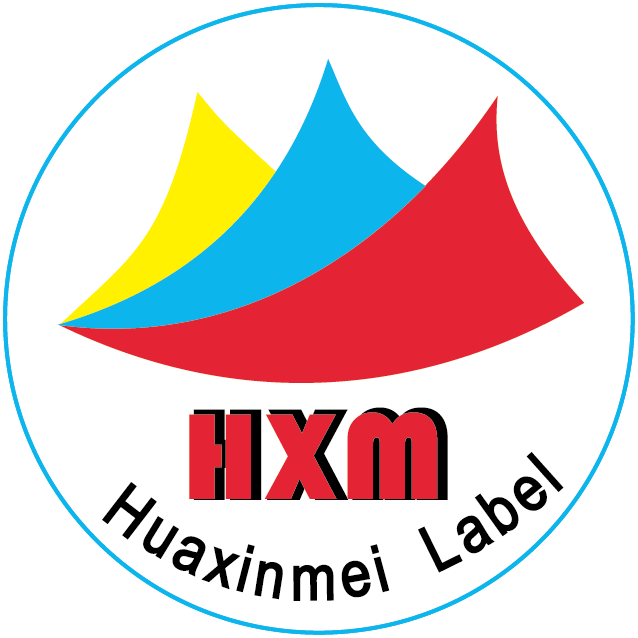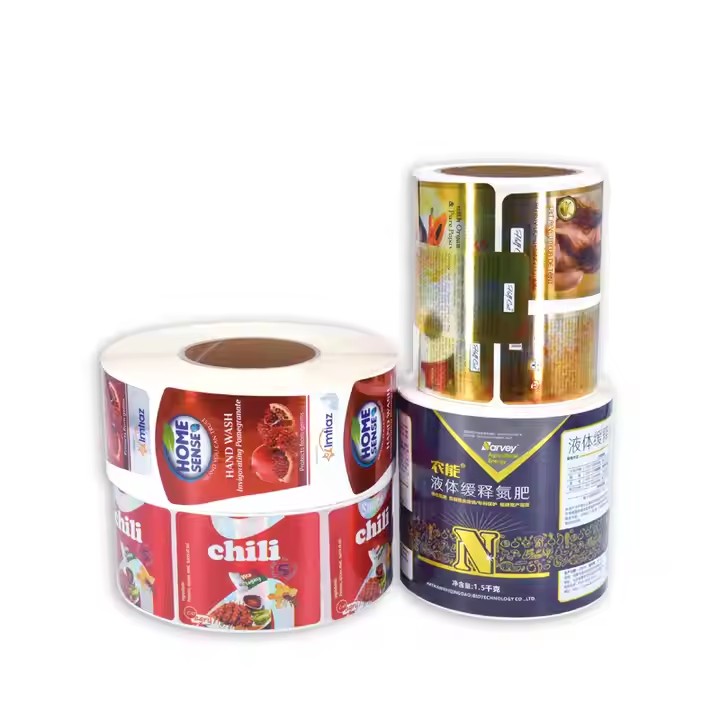Paper Adhesive Labels
Copperplate Paper Adhesive Labels
Material Characteristics: Copperplate paper has a smooth surface with a uniform coating, enabling printed patterns and texts to have vivid colors and high clarity. Its backing adhesive is usually an acrylate-based pressure-sensitive adhesive, which has good initial adhesion and holding adhesion. This adhesive can quickly adhere to the glass surface, forming a strong adhesive force and maintaining stable adhesion over a long period, not easily losing its stickiness over time.
Application Scenarios: Widely used in the packaging of glass jars for food, pharmaceuticals, daily necessities, etc. For example, on glass medicine bottles, copperplate paper adhesive labels can clearly print important information such as the medicine name, ingredients, and usage instructions. Their good adhesion can ensure that the labels do not fall off during the storage and circulation of the medicine, ensuring the integrity and recognizability of the medicine information. As for the material of glass, relatively special materials need to be used; otherwise, the labels are likely to fall off. For instance, consumers usually place skin care products on the washstand. During the use of skin care products, the labels are very likely to fall off. According to customers’ usage habits, attention should be paid to the material of the labels used.
Thermal Paper Adhesive Labels
Material Characteristics: The special feature of thermal paper is that it can display texts and images by heating the thermal print head without the need for ink. Its backing adhesive is generally a hot-melt pressure-sensitive adhesive, which can quickly melt when heated, closely bond with the glass surface, and form a firm sticking effect after cooling. The adhesion of this label has a certain dependence on temperature. It can maintain good adhesion at room temperature, but it may be affected to some extent in high or low-temperature environments. The characteristics of the label material are very important, and materials that can strongly adhere to the glass surface should be used.
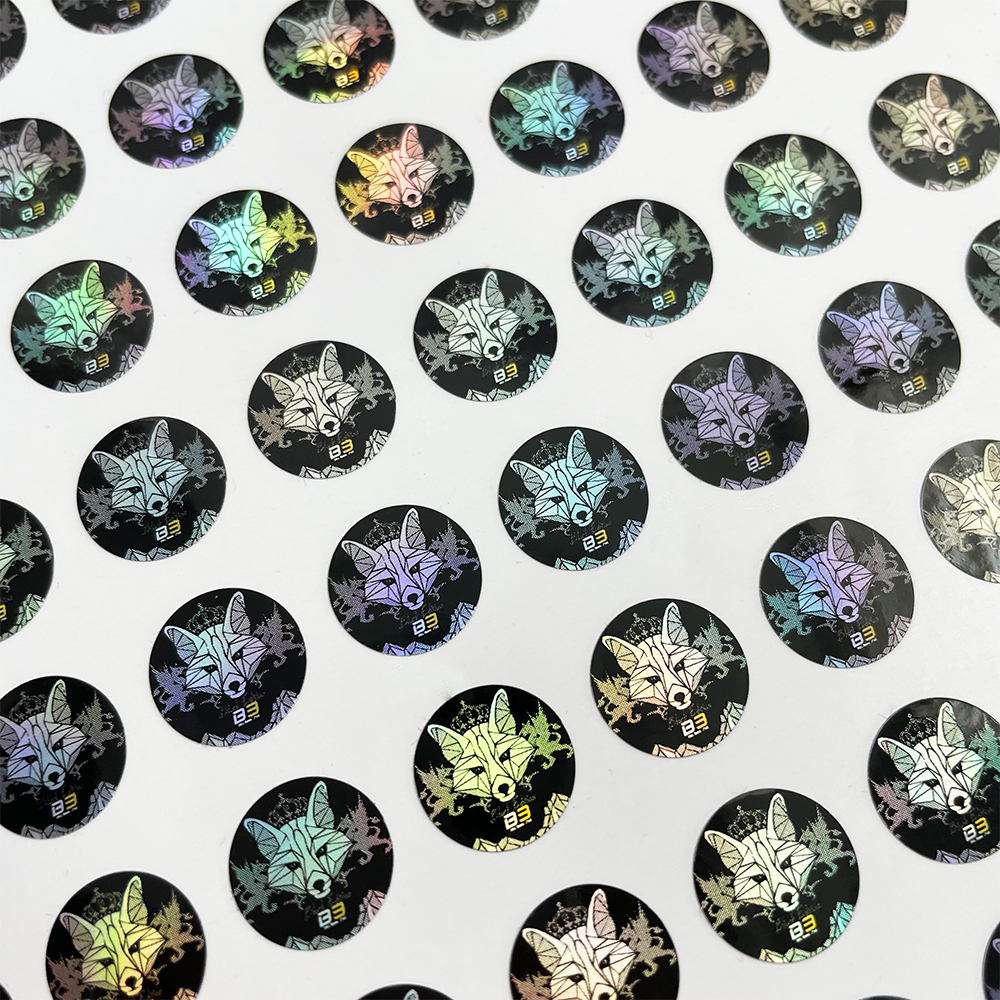
Application Scenarios: Commonly used for glass jars that require quick label printing and have requirements for the timeliness of information, such as glass preservation jars for fresh food. In the fresh food section of supermarkets, thermal paper adhesive labels can print real-time information such as prices and shelf lives according to the sales situation of the goods. Their strong adhesion can ensure that the labels do not fall off during the storage and sales of fresh food, providing consumers with accurate product information. In addition, it is also suitable for glass beverage bottles because when beverages are frozen, the surface will be wet, and non-adhesive paper labels are likely to fall off, damaging the integrity of the product.
Synthetic Material Adhesive Labels
PET Adhesive Labels
Material Characteristics: PET material has high strength, high toughness, and good chemical resistance. Its surface is smooth, allowing for high-precision printing. The backing adhesive of PET adhesive labels usually uses high-performance acrylate pressure-sensitive adhesive, which has excellent weather resistance and water resistance and can maintain stable adhesion under various environmental conditions. Even if the glass jar is exposed to sunlight or comes into contact with water for a long time, the label is not likely to fall off or deform.
Application Scenarios: Commonly used in the packaging of glass jars for cosmetics, health products, electronic chemicals, etc. For example, on high-end cosmetic glass bottles, PET adhesive labels can print exquisite brand logos and product instructions. Their excellent adhesion and weather resistance can ensure that the labels maintain a good appearance and adhesion during the long-term use and storage of the products, enhancing the product’s quality and brand image.
PP Adhesive Labels
Material Characteristics: PP material is lightweight, with good flexibility and fold resistance. Its surface energy is relatively low, and special surface treatment is required to obtain a good printing effect. The backing adhesive of PP adhesive labels is generally a rubber-based pressure-sensitive adhesive or an acrylate pressure-sensitive adhesive, which has good initial adhesion and holding adhesion. The rubber-based pressure-sensitive adhesive is characterized by strong initial adhesion and can quickly stick to the glass surface; the acrylate pressure-sensitive adhesive performs excellently in terms of water resistance and aging resistance.
Application Scenarios: Suitable for glass jars that need to be frequently handled or squeezed, such as glass beverage bottles and glass seasoning bottles. During the production and transportation of beverages, PP adhesive labels can withstand various mechanical stresses and environmental factors. Their good adhesion can ensure that the labels remain firmly attached to the glass bottles without affecting the product’s identification and sales.
Other Material Labels
Metal Foil Adhesive Labels
Material Characteristics: Metal foil adhesive labels usually use metal materials such as aluminum foil as the facing material, which has a metallic luster and can enhance the visual effect of the product, giving people a sense of high-end and refinement. Its backing adhesive is generally a special metal foil backing adhesive, which has strong adhesion and can overcome the difference in surface energy between the metal foil and the glass, achieving a firm stick. This backing adhesive also has good heat resistance and can maintain stable adhesion within a certain temperature range.
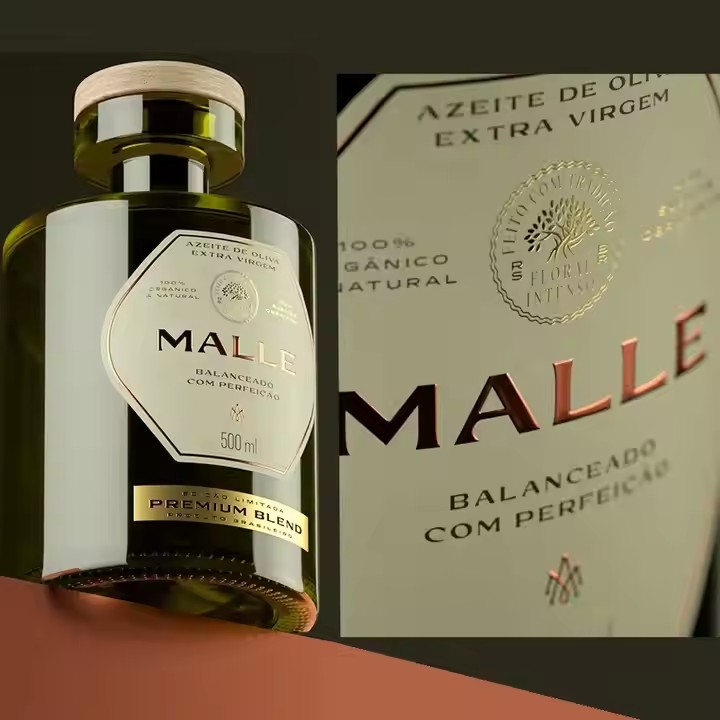
Application Scenarios: Commonly used in the packaging of glass jars for high-end wines, gifts, cosmetics, etc. For example, on some high-end wine glass bottles, metal foil adhesive labels can print the brand’s iconic patterns and texts. Through the texture and luster of the metal foil, the grade of the product is enhanced, and their strong adhesion can ensure that the labels always fit perfectly during the storage and display of the wine bottles, demonstrating the high-end quality of the product.
Fabric Labels
Material Characteristics: Fabric labels generally use materials such as silk and cotton, which are soft in texture and comfortable to the touch. Their surfaces can present various patterns and texts through printing, embroidery, etc. Fabric labels usually use special glue for sticking, which can penetrate into the fabric fibers and at the same time form a strong adhesive force with the glass surface, enabling the label to be firmly attached to the glass jar.
Application Scenarios: Suitable for glass jar products with cultural characteristics or high-end customization, such as sauce jars with traditional craftsmanship characteristics and customized glass perfume bottles. Fabric labels can endow the products with a unique texture and cultural atmosphere. The soft texture of the fabric forms a contrast with the smooth surface of the glass, increasing the visual and tactile appeal of the product, and the strong adhesion ensures the stability of the label during the use of the product.
Paper Adhesive Labels
Copperplate Paper Adhesive Labels
Material Characteristics: Copperplate paper has a smooth surface with a uniform coating, enabling printed patterns and texts to have vivid colors and high clarity. Its backing adhesive is usually an acrylate-based pressure-sensitive adhesive, which has good initial adhesion and holding adhesion. This adhesive can quickly adhere to the glass surface, forming a strong adhesive force and maintaining stable adhesion over a long period, not easily losing its stickiness over time.
Application Scenarios: Widely used in the packaging of glass jars for food, pharmaceuticals, daily necessities, etc. For example, on glass medicine bottles, copperplate paper adhesive labels can clearly print important information such as the medicine name, ingredients, and usage instructions. Their good adhesion can ensure that the labels do not fall off during the storage and circulation of the medicine, ensuring the integrity and recognizability of the medicine information. As for the material of glass, relatively special materials need to be used; otherwise, the labels are likely to fall off. For instance, consumers usually place skin care products on the washstand. During the use of skin care products, the labels are very likely to fall off. According to customers’ usage habits, attention should be paid to the material of the labels used.
Thermal Paper Adhesive Labels
Material Characteristics: The special feature of thermal paper is that it can display texts and images by heating the thermal print head without the need for ink. Its backing adhesive is generally a hot-melt pressure-sensitive adhesive, which can quickly melt when heated, closely bond with the glass surface, and form a firm sticking effect after cooling. The adhesion of this label has a certain dependence on temperature. It can maintain good adhesion at room temperature, but it may be affected to some extent in high or low-temperature environments. The characteristics of the label material are very important, and materials that can strongly adhere to the glass surface should be used.
Application Scenarios: Commonly used for glass jars that require quick label printing and have requirements for the timeliness of information, such as glass preservation jars for fresh food. In the fresh food section of supermarkets, thermal paper adhesive labels can print real-time information such as prices and shelf lives according to the sales situation of the goods. Their strong adhesion can ensure that the labels do not fall off during the storage and sales of fresh food, providing consumers with accurate product information. In addition, it is also suitable for glass beverage bottles because when beverages are frozen, the surface will be wet, and non-adhesive paper labels are likely to fall off, damaging the integrity of the product.
Synthetic Material Adhesive Labels
PET Adhesive Labels
Material Characteristics: PET material has high strength, high toughness, and good chemical resistance. Its surface is smooth, allowing for high-precision printing. The backing adhesive of PET adhesive labels usually uses high-performance acrylate pressure-sensitive adhesive, which has excellent weather resistance and water resistance and can maintain stable adhesion under various environmental conditions. Even if the glass jar is exposed to sunlight or comes into contact with water for a long time, the label is not likely to fall off or deform.
Application Scenarios: Commonly used in the packaging of glass jars for cosmetics, health products, electronic chemicals, etc. For example, on high-end cosmetic glass bottles, PET adhesive labels can print exquisite brand logos and product instructions. Their excellent adhesion and weather resistance can ensure that the labels maintain a good appearance and adhesion during the long-term use and storage of the products, enhancing the product’s quality and brand image.
PP Adhesive Labels
Material Characteristics: PP material is lightweight, with good flexibility and fold resistance. Its surface energy is relatively low, and special surface treatment is required to obtain a good printing effect. The backing adhesive of PP adhesive labels is generally a rubber-based pressure-sensitive adhesive or an acrylate pressure-sensitive adhesive, which has good initial adhesion and holding adhesion. The rubber-based pressure-sensitive adhesive is characterized by strong initial adhesion and can quickly stick to the glass surface; the acrylate pressure-sensitive adhesive performs excellently in terms of water resistance and aging resistance.
Application Scenarios: Suitable for glass jars that need to be frequently handled or squeezed, such as glass beverage bottles and glass seasoning bottles. During the production and transportation of beverages, PP adhesive labels can withstand various mechanical stresses and environmental factors. Their good adhesion can ensure that the labels remain firmly attached to the glass bottles without affecting the product’s identification and sales.
Other Material Labels
Metal Foil Adhesive Labels
Material Characteristics: Metal foil adhesive labels usually use metal materials such as aluminum foil as the facing material, which has a metallic luster and can enhance the visual effect of the product, giving people a sense of high-end and refinement. Its backing adhesive is generally a special metal foil backing adhesive, which has strong adhesion and can overcome the difference in surface energy between the metal foil and the glass, achieving a firm stick. This backing adhesive also has good heat resistance and can maintain stable adhesion within a certain temperature range.
Application Scenarios: Commonly used in the packaging of glass jars for high-end wines, gifts, cosmetics, etc. For example, on some high-end wine glass bottles, metal foil adhesive labels can print the brand’s iconic patterns and texts. Through the texture and luster of the metal foil, the grade of the product is enhanced, and their strong adhesion can ensure that the labels always fit perfectly during the storage and display of the wine bottles, demonstrating the high-end quality of the product.
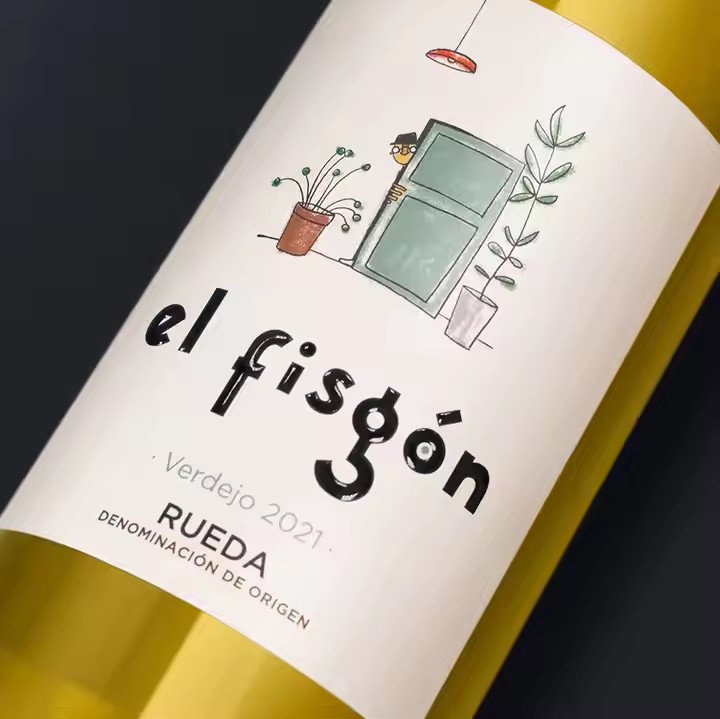
Fabric Labels
Material Characteristics: Fabric labels generally use materials such as silk and cotton, which are soft in texture and comfortable to the touch. Their surfaces can present various patterns and texts through printing, embroidery, etc. Fabric labels usually use special glue for sticking, which can penetrate into the fabric fibers and at the same time form a strong adhesive force with the glass surface, enabling the label to be firmly attached to the glass jar.
Application Scenarios: Suitable for glass jar products with cultural characteristics or high-end customization, such as sauce jars with traditional craftsmanship characteristics and customized glass perfume bottles. Fabric labels can endow the products with a unique texture and cultural atmosphere. The soft texture of the fabric forms a contrast with the smooth surface of the glass, increasing the visual and tactile appeal of the product, and the strong adhesion ensures the stability of the label during the use of the product.
